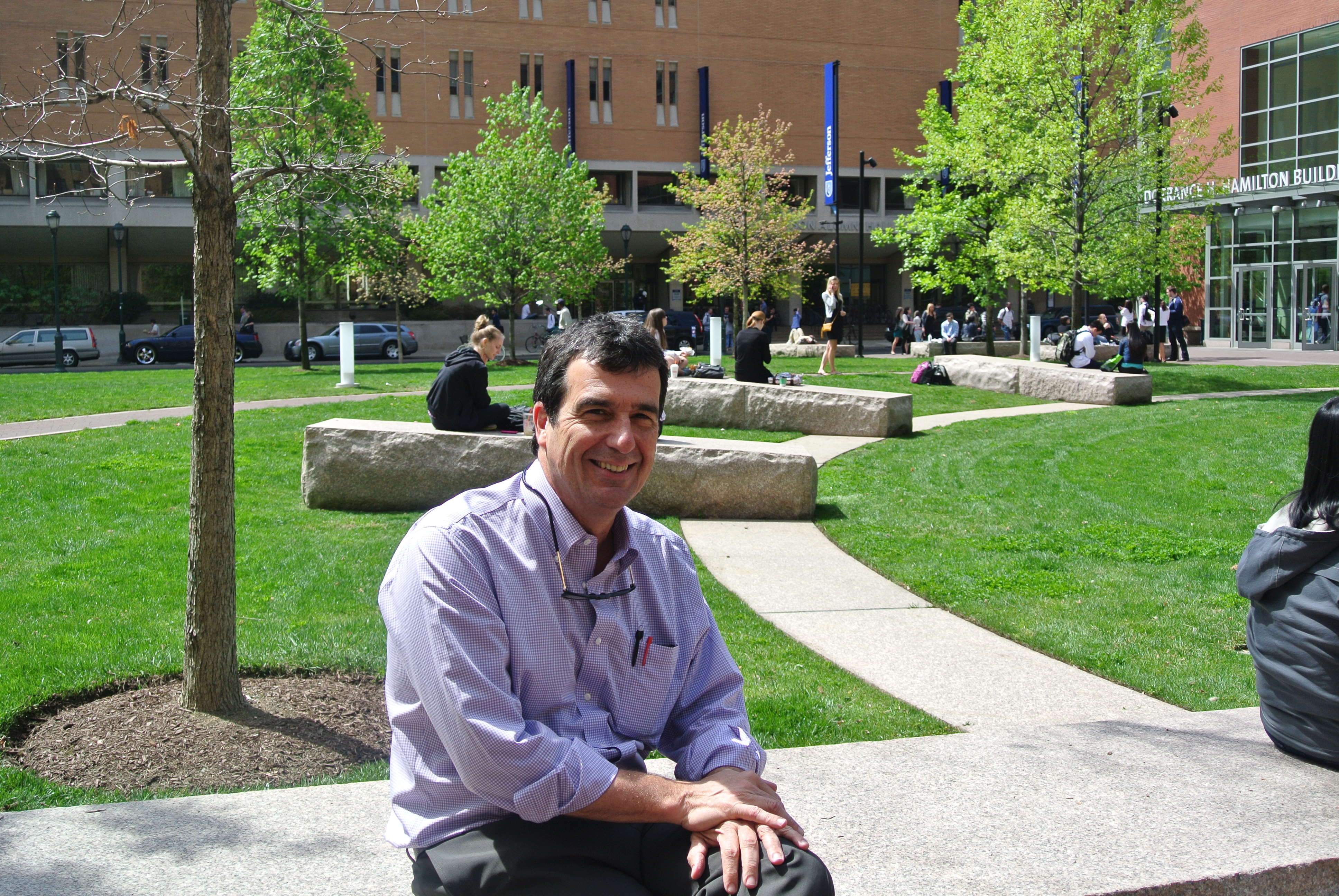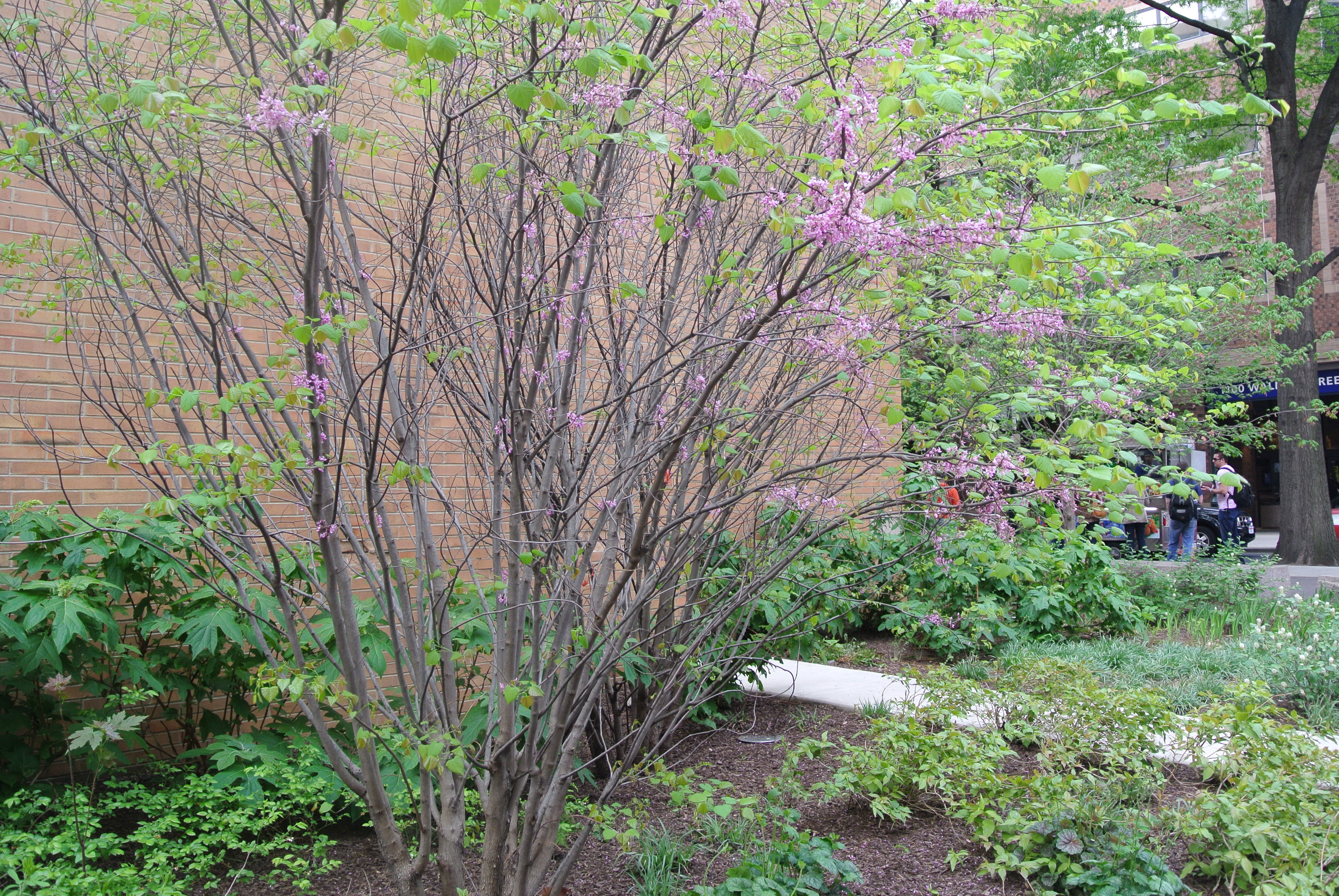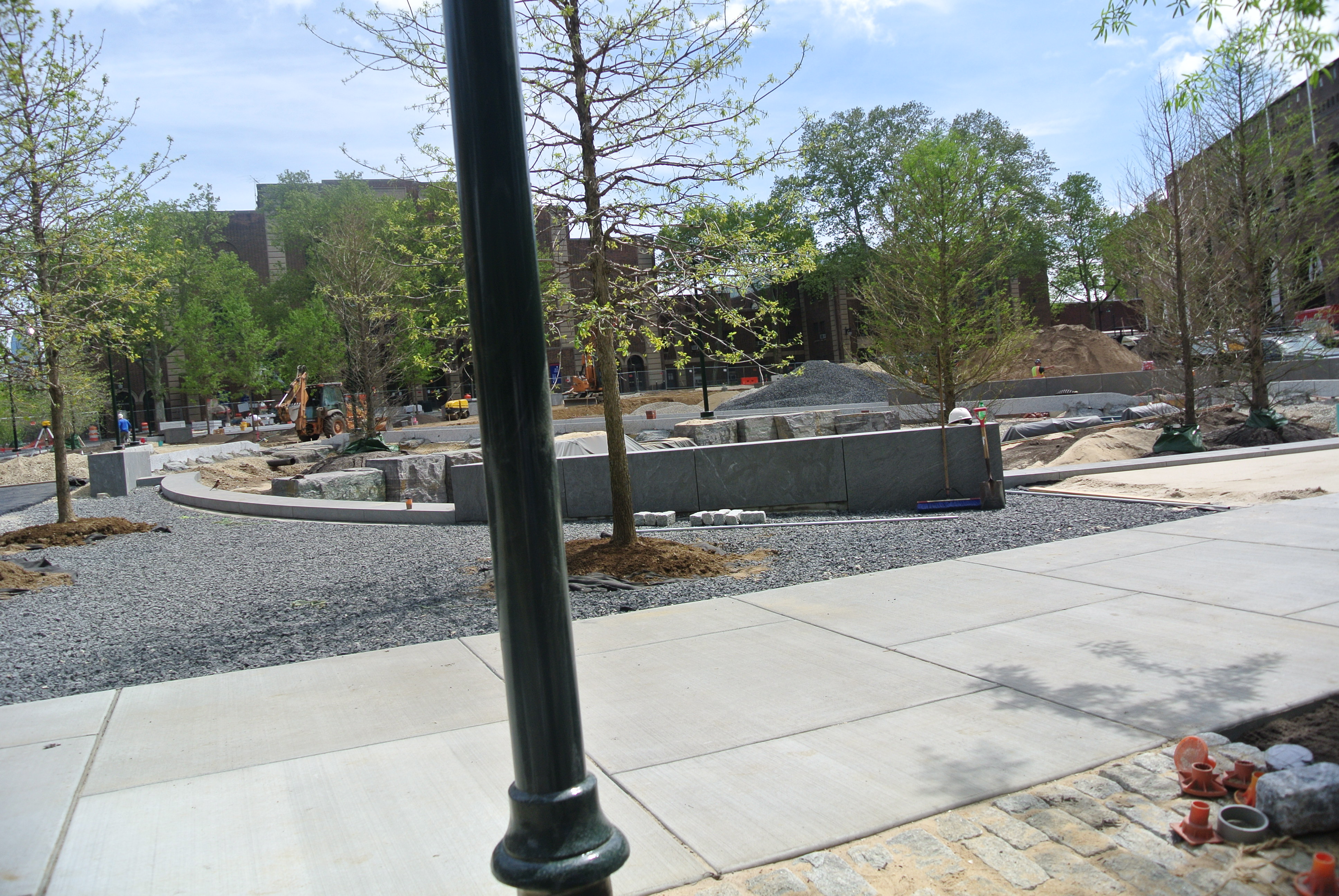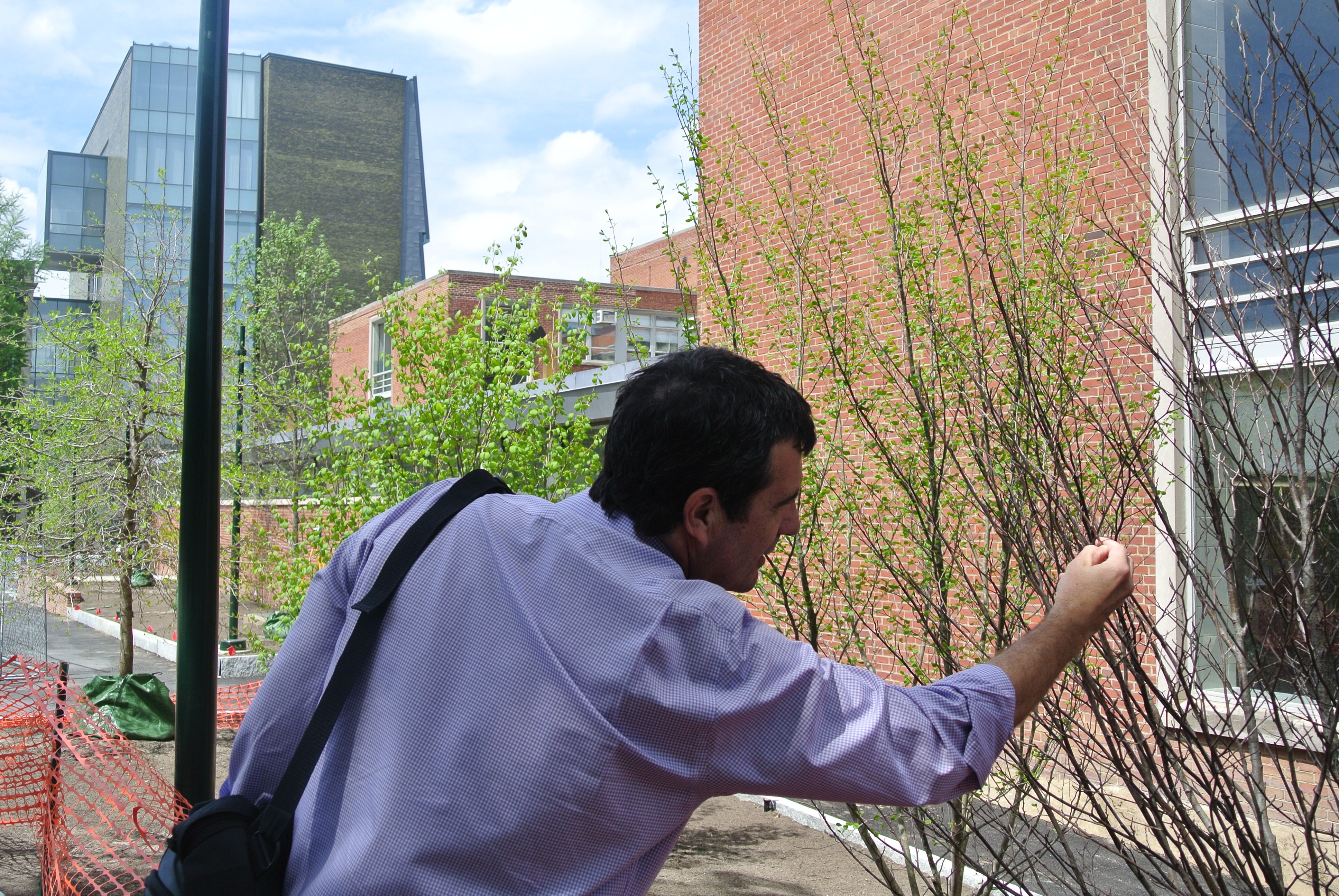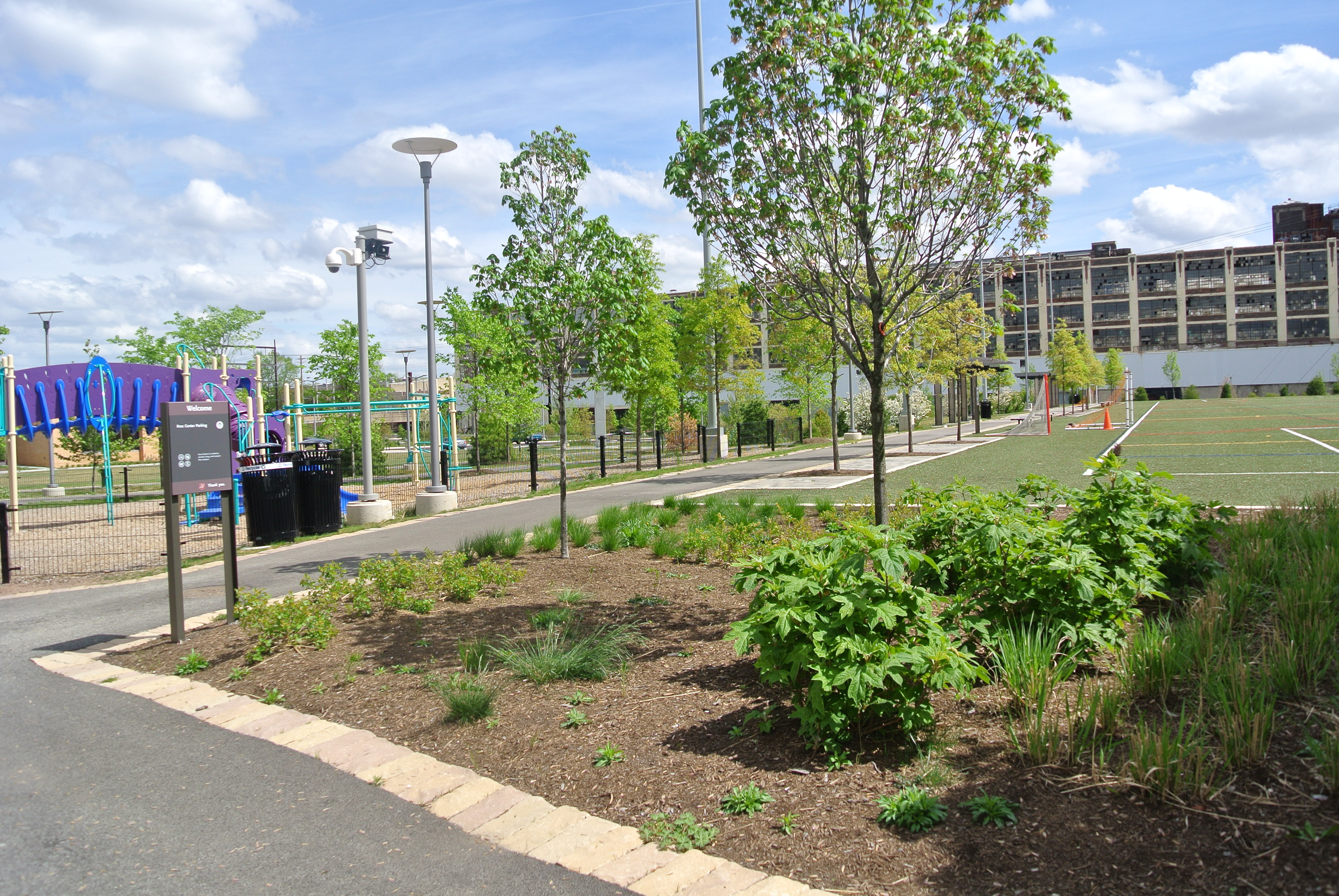In Profile: José M. Almiñana of the Philadelphia Art Commission
“This is wonderful,” exclaims landscape architect José M. Almiñana, practically rubbing his hands with glee as he looks around Thomas Jefferson University’s Lubert Plaza. “It’s great seeing all these people using this space. It’s really satisfying.”
Overhearing him, a young woman pecking away on her laptop turns. “Did you design this place?” Receiving his affirmative nod, she continues: “It’s beautiful — I come here all of the time, and I don’t even go to school here.” Almiñana, a principal at the Manayunk-based firm, Andropogon, tries to look modest, but his broad smile suggests the compliment pleases him immensely.
His demeanor on this sunny April afternoon — and the purple checked shirt he’s wearing — are in marked contrast to the serious mien and sharp suits he usually adopts when he takes his place at the end of the conference table on the first Wednesday of each month for Art Commission meetings. There, he’s almost guaranteed to at some point issue his clarion call: What about the green space?
“I just don’t think most projects live up to their potential when it comes to landscape considerations,” he says, watching as students and strollers stop to bask in the sun, read textbooks, and eat lunch on the plaza’s rough-hewn granite slabs. “Projects come to the Art Commission because they have an impact on the public realm.”
The problem is, he adds, the Commission is often the last stop. “By the time they get here, things are already cooked,” he says. “I can’t tell you how many times I hear, ‘but we start building next week!’ It’s not always the best situation, but the largest space in any city is the public right of way. It has to be given proper attention.”
And, as one might expect, Almiñana believes that green is a necessary component of the way we experience and enjoy that space.
Ever since he made his way to Philadelphia in 1981 as a newly-minted architect from Venezuela, he’s believed that. “I came here to attend Penn’s program in landscape architecture because its program was so extraordinary and I wanted to become a better architect,” he says. “I thought to do that, I’d better know how the land is made.”
While studying “regular” architecture, in fact, his professor had told Almiñana that Ian McHarg’s “Design With Nature” was the field’s bible. The highly influential McHarg had developed Penn’s landscape architecture department in the late 1950s and would later go on to found the firm we now know as Wallace Roberts and Todd.
“I learned that what we call the ‘built environment’ is only part of the design of the public realm,” Almiñana, now 56, says. “Often, there’s not enough consideration about the landscape and the existing eco-systems and wildlife corridors. We need to allow room for those to thrive, too.”
At less than two acres, Jefferson’s plaza is thoroughly urban — its expanses of tiered stone benches (made from the same material as that which covers some older Jefferson buildings, as well as the bae of the Reading Terminal train shed), and its melange of mid-rise buildings are at first glance more noticeable than its swamp white oaks and medicinal plant beds.
Still, it works hard to serve, whether by reusing stormwater to irrigate that foliage or by elevating the mood of, precisely, 88 percent (according to a survey!) of those who enter it. So successfully does it merge these functions, the Landscape Architecture Foundation recently selected the $2 million (out of a total $60 million dedicated to the comprehensive reworking of the site), five-year old effort as a case study project.
Sitting here, Almiñana points out that Andropogon’s work will continue at Jefferson — next up, is a look at improving some of the plantings and barriers around Alumni Hall. That leads him to consider other projects the firm has done on urban campuses.
“Think about it,” he says urgently. “The most memorable experiences you have at university are the journeys between the buildings. It’s not the great architecture, it’s the courtyards, the paths. . . .”
Out in University City, the firm is currently putting the finishing touches on Penn’s Shoemaker Green, a four-acre park that replaces some sunken tennis courts and aims to provide a better connection between Franklin Field and the Palestra. The space echoes some of the features at Jefferson, but adds a rolling lawn and a large rain garden. It will be, says Almiñana, “one of, in not the only, place where the campus connects directly to the street.”
At Drexel, Andropogon — named for a genus of common grasses — is part of the team behind a new master plan designed to strengthen the school’s connections to its street grid, a distinguishing asset that Almiñana says it hasn’t taken advantage of.
West Philly is clearly special to him — he’s lived in nearby Powelton Village since he was a student at Penn and driving around the streets of University City, he’s quick to point out Andropogon’s touches. Further west, the firm is currently reworking the trolley portal at 40th street, adding some greening elements and even a cafe. “This is the gateway to West Philadelphia, really,” he says, “and it could be a lot more welcoming.”
Almiñana, who joined the Art Commission after a personal invite from the mayor, even though the two had never spoken before, knows his work there has impact, too. “When I think of things that we’ve done that have made a difference, I think of projects like the recent Streets Department bridge projects around Parkside,” he says. “We kept on them, asking them to come back with concepts that more directly offered a response to the neighborhood,” he says.
Greater Center City has “blossomed,” he says, since he first arrived three decades ago. “Philadelphia is now in an enviable position — we have ample capacity to grow without building new roads and infrastructure. At the same time,” he continues, “there’s still ample opportunity to turn neglected plots into places of respite.”
One example that’s garnered him and his firm a lot of attention is the Salvation Army’s Kroc Center, up in Hunting Park. “That was negatively-performing space that contributed nothing to anyone,” he says. “Now, it’s contributing immensely and it was all done in a way that was very low impact.”
“Look at those bees,” he says, pointing with delight at a hummingly alive red patch of clover that’s seeded in the vegetable garden at the back of the Kroc property.
“That’s an example of the service that nature provides. No bees, no pollination, no food — simple as that. The fostering of biophilia — the love for living things — is part of that service, too. So is the tranquility and beauty of nature. For me, it’s all of these ideas. The idea that landscapes are interventions that can perform.”
Contact the reporter at jgreco@planphilly.com and follow her on Twitter @joanngreco
WHYY is your source for fact-based, in-depth journalism and information. As a nonprofit organization, we rely on financial support from readers like you. Please give today.



